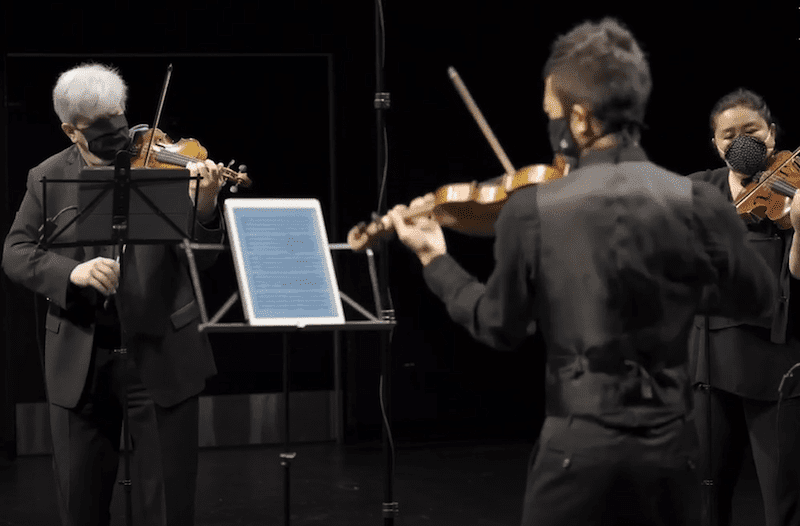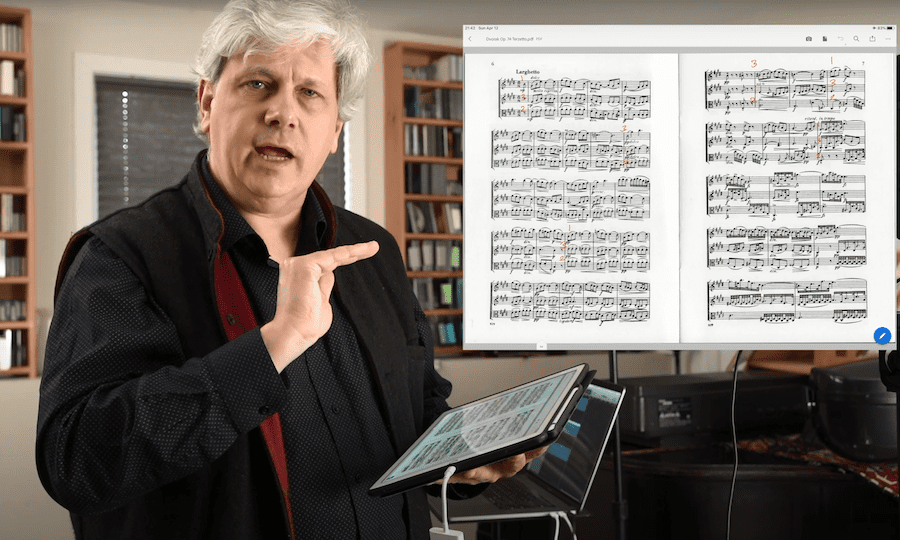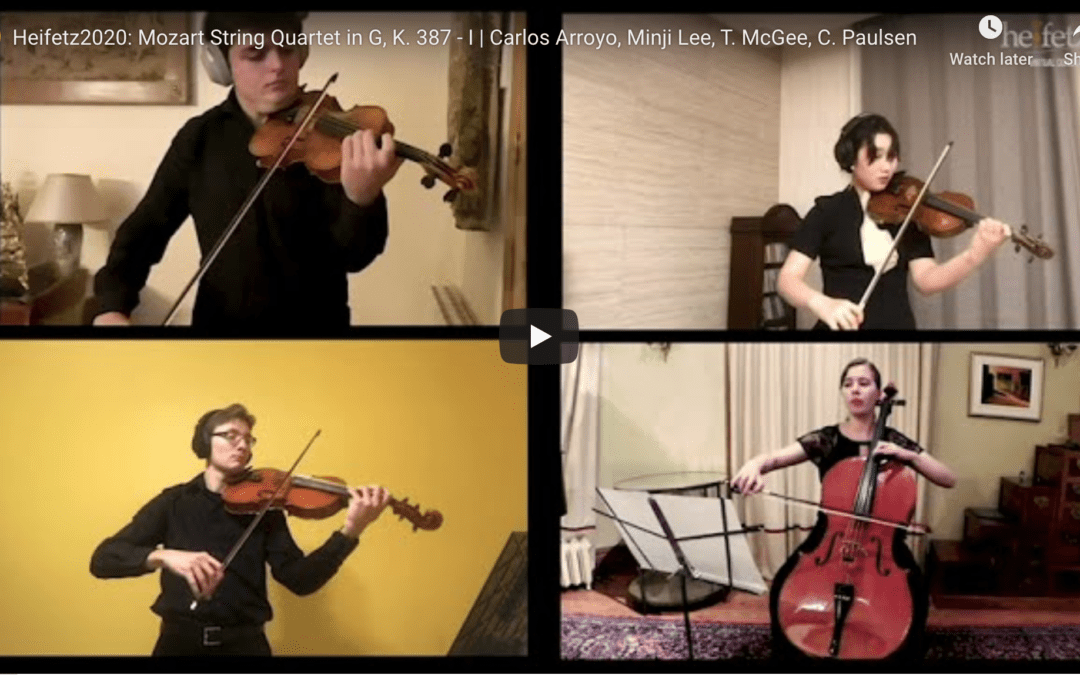Chamber music is a major component of a summer at Heifetz. With a sole focus on solo works and small ensembles, our students have myriad opportunities to express themselves in intimate settings. The term chamber music itself refers to compositions intended for a small group of instrumentalists that could fit in a palace chamber or a large room. But what happens when gathering with even a small group of fellow musicians, let alone an intimate audience, is out of the question?
You can make like our ensemble in residence, The Borromeo String Quartet, who took all the necessary precautions when convening in person for the first time in five months to perform Beethoven’s String Quartet No. 14 in C-sharp minor, Op. 131 at their local “chamber” – the Plimpton Shattuck Black Box Theatre at New England Conservatory in Boston, MA. This stunning performance served as a remarkable and fitting finale for our Beethoven Experience, which started in person in February at the American Shakespeare Center’s Blackfriars Playhouse, but shifted to the virtual realm along with the rest of our activities in response to the global pandemic.

The Borromeo String Quartet


Nicholas Kitchen, Heifetz Institute artistic director
But what about when your string quartet is spread over three continents? For students of our Virtual Heifetz 2020 Ashkenasi/Kirshbaum Chamber Music Seminar, a more elaborate solution was in order. Under Artistic Director Nick Kitchen’s leadership, we have created a systematic, orderly method for creating musical collaborations across distances that is artistically valid, and faithful to our communicative mission (see his explanation of the “checkerboard approach”). We’ve also tested different equipment that we provided to our students and faculty as part of the “technology toolkit” to help them create a higher standard of music-making, including studio microphones and headphones, and have provided extensive training across a variety of digital audio workstations. All of these elements have allowed us to design a platform in which our students could still present meaningful performances, and the results of the online collaborations between soloists and pianists have been truly amazing.
The subtle and dynamic interplay required for a string quartet performance would push this architecture to its limits, and its success would ultimately lie with the performers themselves. The quartet of violinists Carlos Arroyo (Spain), Minji Lee (South Korea), violist Tal McGee (Texas), and cellist Caroline Paulsen (Illinois), was more than up to the challenge though in performing Mozart’s String Quartet No. 14. In fact, not only did they execute an extremely natural and compelling performance, they actually found the process to be richer in some ways than the traditional rehearsal and performance process. As Tal notes in his introduction, “To create our performance we’ve had to go through a complicated process of musical discussion, recording, and editing. While this process may be more time consuming and unnatural than a typical quartet rehearsal, it forces us to become more deeply aware of the score and of our own individual playing, which I have found to be a very valuable learning experience.”
If chamber music performances are marked by the intimacy with the instrumentalists, you’re unlikely to get much more up close and personal than being brought in to the performer’s own home. We hope you enjoy this remarkable collaboration from all four corners of the globe to your very own chamber. Bravi tutti to Carlos, Minji, Tal, and Caroline!


